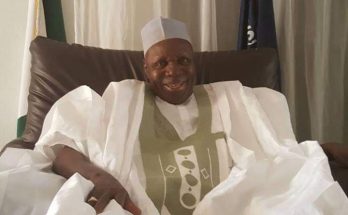Last week some women organizations held a two-day seminar on the issue of women affirmative action with particular reference to women representation in elective political offices.
The focus of the seminar was on the actualization of the Gentleman Agreement on the 35 per cent representation of women in all elective positions, especially in the National and State Legislative Assemblies.
Examples from all over the world confirm the view that affirmative action is not a one-day affair. Its realization is incremental and takes time.
The first major step towards the enfranchisement of women in the United Kingdom was the Representation of the Peoples Act 1918, which gave the vote to women of 30 years and above who met certain property qualifications. The Act was amended in 1928 to reduce the age limit to 21 years. And it was not until 1920 that the nineteenth amendment to the Constitution of the United States granted the right to vote to all women.
The right to stand for election in Africa was granted after independence. Some examples are listed below: Algeria, 1962; Angola, 1975; Benin, 1956; Botswana, 1965; Burkina Faso, 1958; Burundi, 1961; Cameroon, 1946; Cape Verde, 1975; Central African Republic, 1986; Chad, 1958; Comoros, 1956; Congo Brazzaville 1963; Nigeria: women in the Southern Nigeria, 1950; those in Northern Nigeria, 1976.
One unique feature of women affirmative action is the fact that initially the focus was on the right to vote and stand for election. The struggles for other rights were later added.
In Nigeria, affirmative action took organizational form largely due to external factors, especially the initiatives of the United Nations Organization which organized a conference on women in Mexico in 1975.
In response to the two recommendations of the conference which were the World Action Plan for Women and the Declaration of 1976 to 1985 as the United Nations Decade for Women, most member states of the UNO decided to implement the World Action Plan for Women. Late Maryam Babangida was the right person at the right time; she decided to implement the World Action Plan for Women in Nigeria. Her initiative marked the beginning of activities of First Ladies in development programmes for women in Nigeria.
The First Ladies before her – Mrs. Azikiwe, Mrs. Ironsi, Mrs. Gowon, Mrs. Murtala Mohammed, Mrs. Shagari and Mrs. Buhari were “home front” women, managing the State House and receiving and entertaining guests. Mrs Maryam Babangida mobilized wives of State Military Governors and Service Chiefs in her programme of Better Life for Rural Women.
Other First Ladies followed her footsteps and introduced their own programmes – Mrs. Skonekan, Examination Ethics; Mrs. Maryam Abacha, Family Support Programme; Mrs. Fati Abdulsalami, Women’s Rights Advancement and Protection Alternatives; Mrs. Stella Obasanjo, Child Care Trust, Mrs. Titi Abubakar- Women Trafficking and Child Labour Eradication Foundation.
Non-governmental organizations like National Council of Women Societies and Women in Nigeria and others joined the bandwagon.
The foregoing women organizations were concerned with social and economic development of women. The programmes of the First Ladies were responsible for some major legacies, which include the National Policy on Women, Ministry for Women Affairs, Women Development Centre and National Hospital for Children, now National Hospital. The major challenge of the initiatives of the First Ladies is that they were regime based and fizzle out with the end of their husband’s regime.
The programmes of First Ladies did not promote the empowerment of women in political representation. They should have introduced such programmes when their husbands were committed to the cause of women and a lot of resources were mobilized for them.
Empowerment of women into elective positions is not encouraging. In over fifty years of the existence of the Nigerian State, no woman has ever been elected to the office of President or Vice President; no woman has ever been elected as a State Governor. The case of Anambra State when a woman temporarily occupied the seat of Governor was due to a decision of the court.
The number of women Speakers, Deputy Speakers, Local Government Chairmen and Members of the National and State Assemblies are few compared to their male counterparts.
The factors responsible for this state of affairs are many. The First Past the Post Electoral System did not favour women. The idea of a winner takes all cannot favour women who do not have the resources and ability to contest with their male counterparts.
Many countries especially those in the Southern African Region have solved this problem through the adaption of the Proportional System of representation. The Uwais Electoral Reform Committee recommended this, however this recommendation did not go beyond the National Assembly.
First Ladies do not develop strong programmes for women representation in elective positions. They were more interested in social and economic empowerment, and programmes aimed at promoting the image of their husbands.
The contest of elective positions is fierce and often leads to violence, kidnappings and arson. Women by their nature are peaceful and against any form of violence.
The demand by women for 35% representation is rather on the high side. Even advanced democracies like the USA and UK do not have anything close to that figure. This is why men are not sympathetic to their demand.
It is necessary for women to go back to the drawing table and re-strategize and make their demands more male friendly, 20% is not bad for a start,
The First Lady should be more proactive and put more pressure on all those people and institutions who can contribute in promoting the cause of women.
The participation of the few women in elective position leaves much to be desired. The level of absenteeism is high among them. Only a few of them have presented a private members-bill. Their case will receive sympathetic hearing if their performance justifies it.



